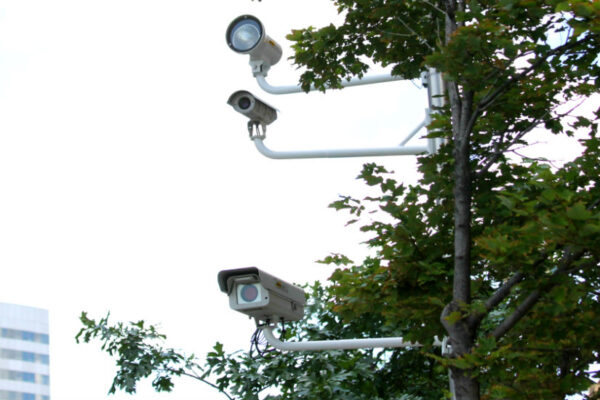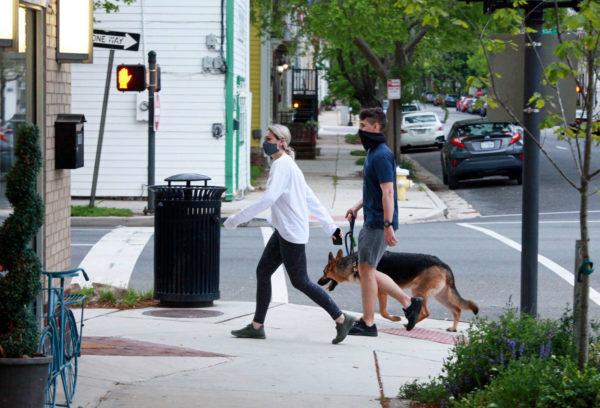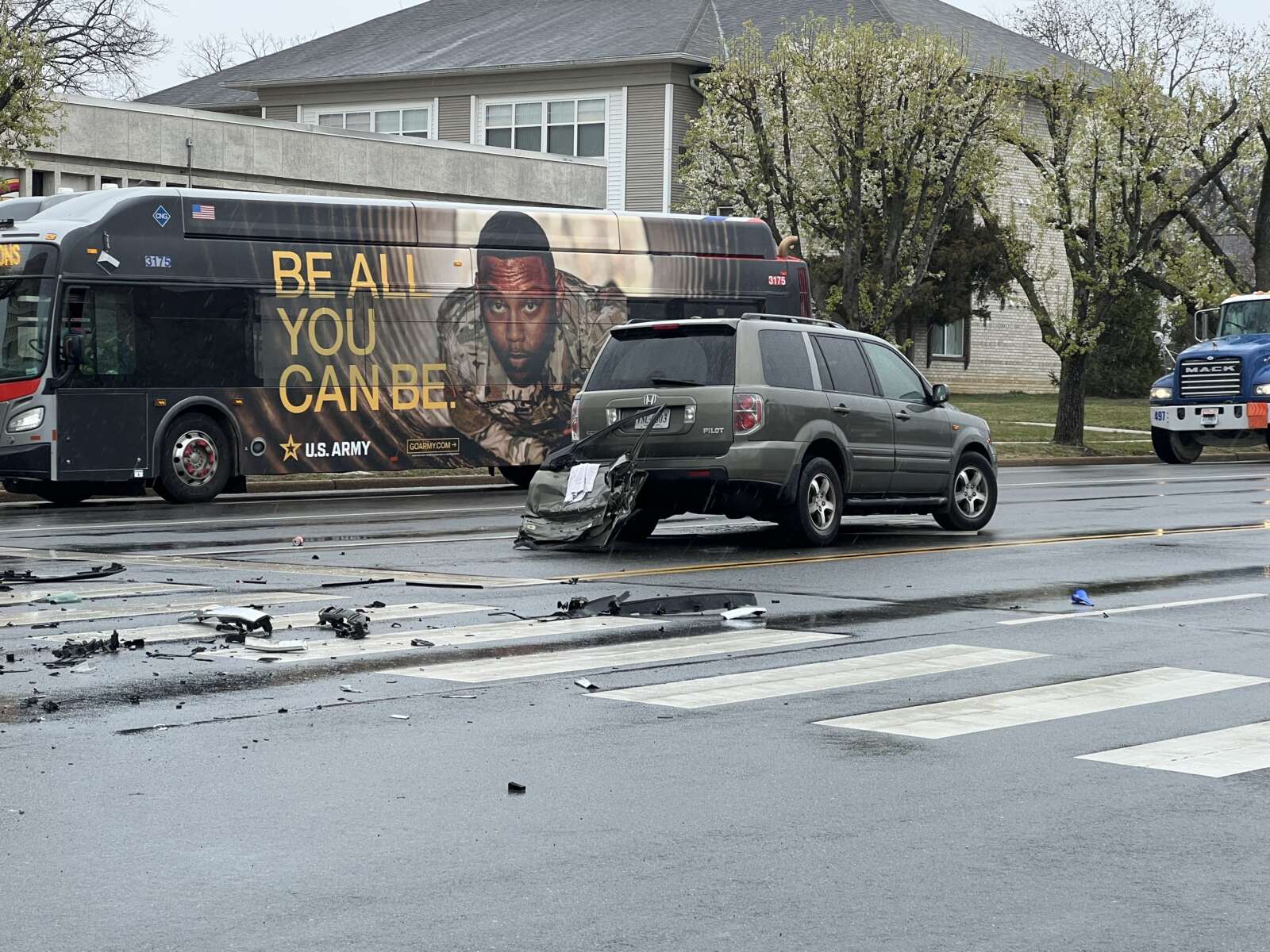
The Washington Area Bicyclist Association (WABA) announced a new crash tracker that lets Alexandrians and residents of other nearby localities track and report dangerous situations.
A release from WABA said the new tracker lets residents of Northern Virginia, Prince George’s County, Montgomery County and Washington D.C. report:
- Near-miss incidents
- Traffic crashes
- Cars parked in bike lanes
- Dangerous street locations
The tracker also lets reporters say when the incident happened, who was at fault (bicyclist, scooters, drivers, etc.), and who was affected. A map link at the bottom lets the person filing the report pinpoint exactly where it happened.
The release said the tool also lets people filing a report send it directly to local elected officials and the local department of transportation for wherever the incident took place.
“Our tool will not only allow us to monitor where traffic crashes are taking place in the region but it will also serve as an advocacy tool to tell our local governments that there are traffic incidents taking place in our communities,” Jeremiah Lowery, advocacy director for WABA, said in the release.
Alexandria achieved zero traffic fatalities in 2023, a major milestone, but there were still hundreds of crashes around the city.
The Alexandria Vision Zero website said there were 862 total crashes in 2023. Of those, 228 resulted in non-severe injuries while 14 resulted in severe injuries.
Many of those crashes were in Old Town and along major roads, like Duke Street, King Street and Glebe Road. According to the city’s website, 70% of all fatal or severe crashes from 2016-2020 in Alexandria occurred on 10% of the city’s street network.
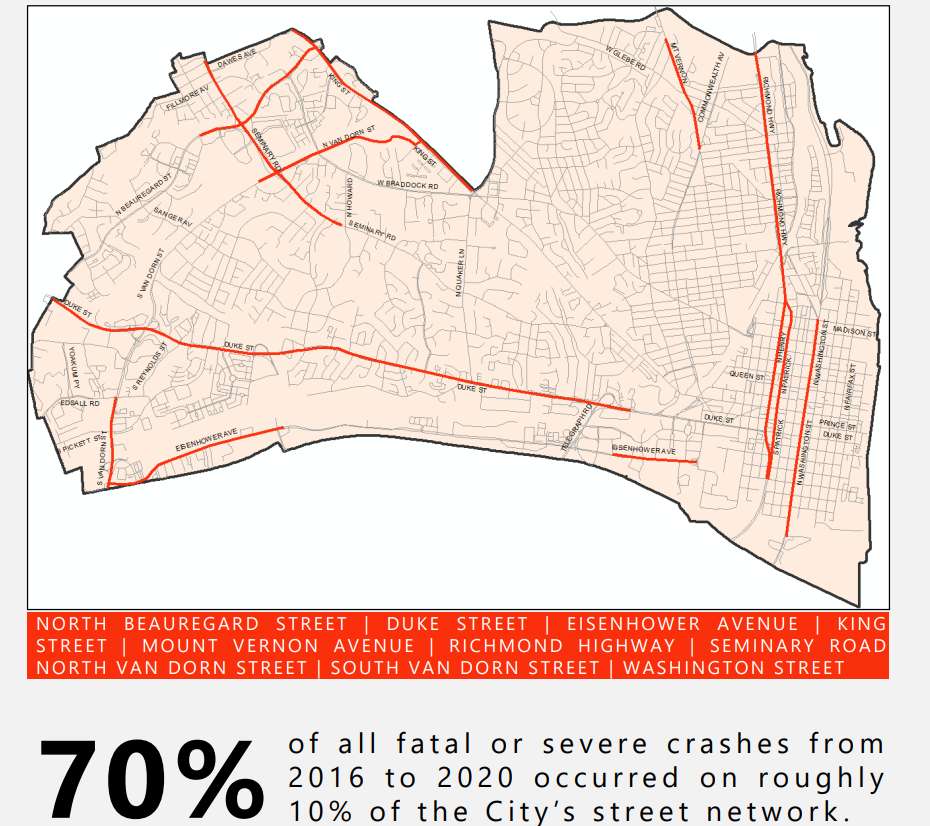

A few days after videos emerged of a mob taking over a Seminary Road intersection, Alexandria announced a new carrot-and-stick approach to dealing with traffic safety.
The carrot is a new public safety campaign. According to a release from the City of Alexandria:
The Alexandria Police Department (APD) and the Department of Transportation and Environmental Services (T&ES) join multiple law enforcement agencies across the region to raise awareness about pedestrian, bicycle, and driver safety and highlight enforcement of the laws that protect Alexandrians walking, biking, and driving on City streets. Street Smart, the region-wide public safety campaign, educates residents about the safe use of roadways. Street Smart complements Alexandria’s Vision Zero efforts to end traffic fatalities.
But the release said it won’t all be public safety education: the city will also deploy more resources to deterring aggressive driving on some of the city’s arterial roads.
“In partnership with the Metropolitan Washington Council of Governments, APD will concentrate enforcement of traffic safety laws with focused radar and officer patrol to deter aggressive driving around the King Street metro area and will include West Braddock and Seminary Roads, Duke Street, and Commonwealth Avenue,” the release said.
The release said the changes are in line with the city’s work on Vision Zero planning — a pledge to get deaths in car crashes down to zero. Crashes have been trending downward over the last decade, though the number of deaths and serious injuries has remained fairly consistent.

If you speed near an Alexandria school zone, you’ve been warned: starting next Monday, you could get a ticket from the speed cameras.
Speed cameras were installed earlier this year near Francis Hammond Middle School, John Adams Elementary School, Ferdiannty T. Day Elementary School and George Washington Middle School.
“An initial warning period was conducted in June at the end of the 2022-23 school year,” a staff report said. “The City issued over 3,500 warning notices during this time.”
After a second waring period, which started Aug. 21 and will end on Sunday, Sept. 17, the program will go live on Monday, Sept. 18 and begin issuing paid citations.
The staff report to the Traffic and Parking Board noted that there were some technical hiccups at the start of the most recent warning period:
During the warning period conducted at the start of the 2023-24 school year, staff faced a technical issue resulting in some flashing school zone signs not operating properly during school hours. This was the result of an equipment issue as part of parallel project to upgrade all of the City’s flashing school zone signs to current technology. Staff was able to resolve this issue quickly, and speed camera warning notices were not issued to drivers where the flashing school zone sign was not active
The maximum fine for a speed camera violation is $100, payable online, by mail or by phone.
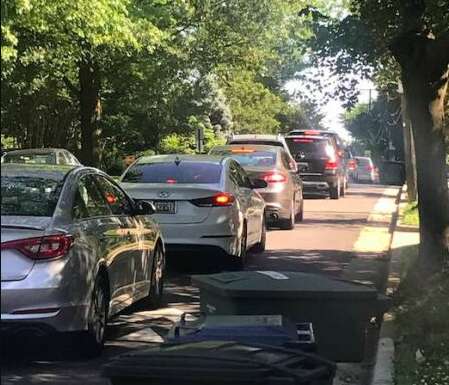
After years of struggling with terrible traffic and frequent crashes, recent changes to West Taylor Run Parkway have had a substantial impact on the trouble street’s residents.
Alexandria city staff are recommending that a Duke Street Traffic Mitigation pilot — which redirects traffic flow onto Duke Street and off of “cut-through” streets winding through nearby neighborhoods — be made permanent.
The pilot program changed traffic signal timing to prioritize green lights on Quaker Lane and Duke Street while shortening the lights on the cut-through roads, the goal being to disincentivize using the side streets to get around traffic on Duke Street.
At a meeting of the Traffic and Parking Board on Monday, West Taylor Run Parkway resident Leslie Catherwood said the change has had a dramatic impact on residents of the street.
“I’d like to start off by thanking the city for proposing this project and to thank the board for considering permanently closing Telegraph Road from West Taylor Run,” Catherwood said. “As a homeowner on West Taylor Run, this project has vastly improved our quality of life.”
Catherwood said prior to the change, it was nearly impossible for some residents to access their driveways given how backed up traffic was on the street.
“Prior to the change, I could not get into or out of my driveway at all for seven days a week at all hours of the day,” Catherwood said. “The traffic would back up on my street from Duke Street all the way to Janney’s Lane. West Taylor Run became a parking lot.”
Other residents previously told ALXnow the street was prone to frequent crashes. But while it’s not perfect — northbound traffic remains an issue on the street — Catherwood said some of that has changed with the new pilot program.
“Today, we don’t have a problem of this magnitude anymore with southbound traffic,” Catherwood said. “Since the project started, we’ve seen changes in traffic patterns. We no longer have a parking lot on West Taylor Run. The southbound traffic no longer backs up for the entire street.”
The Traffic and Parking Board voted unanimously to recommend the change be made permanent.
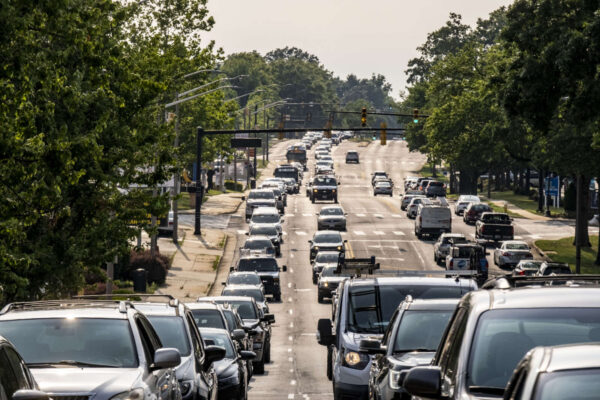
Alexandria transportation officials say that a pilot program to ease evening congestion on and around Duke Street is working and they want to make the changes permanent.
City staff announced last night (Wednesday) that the first and second phases of the Duke Street Traffic Mitigation pilot have improved evening peak traffic and reduced cut-through traffic near the busy roadway. The project launched last summer with extended green traffic lights on Quaker Lane and Duke Street from 4 to 6 p.m., while green lights were shortened on West Taylor Run Parkway, Cambridge Road, Yale Drive and Fort Williams Parkway.
“We did have very positive results on cut-through traffic for most roads,” said Dan Scalese, a senior transportation manager with the city. “This has been a benefit. We’ve seen reductions in cut-through [traffic] and that Duke Street is moving.”
Traffic volumes decreased on Cambridge Road by 48%; on West Taylor Run Parkway by 54%; on Yale Drive by 76% and on Fort Williams Parkway by 47%. Cut-through traffic did increase, however, on Quaker Lane by 39%.
“We obviously saw more Quaker Lane backup,” Scalese said. “Our next step is to essentially going to a maintenance-type mode, (where) this is now considered a permanent infrastructure feature. We will be monitoring the networks, not just one area, and tweaking as necessary.”
City staff will discuss the mitigation phases in a meeting at Bishop Ireton High School on Monday, April 17. The proposal then goes to the Traffic and Parking Board at 7 p.m. at City Hall on Monday, April 24.
In the meantime, city planners are also working on ways to improve bus transit — as well as bicycle and pedestrian facilities — along Duke Street from Landmark Mall to the King Street Metro Station.
Dubbed Duke Street in Motion, the project proposes a series of congestion-relieving changes such as dedicated bus lanes along the center of the road or the curb and bus-rapid transit stations every half-mile.
City Council is expected to approve a preferred alternative for the project in July.
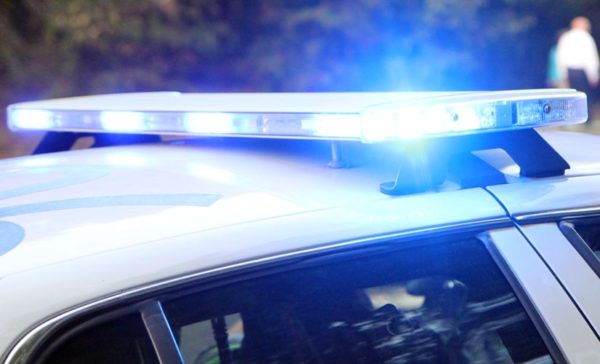
The number of traffic crashes and injuries is on the rise in Alexandria, according to a new report from the Metropolitan Washington Council of Governments (COG).
Alcohol-related traffic arrests in Alexandria rose 29% in 2021, with 230 incidents reported. However, 2020 was a pandemic year that saw fewer drivers on the road and 178 total alcohol-related traffic arrests — the lowest number in many years.
“The timing of this report is poignant as we enter the holiday season, a time of year when we see increases in impaired driving” said COG Police Chiefs Committee Chair and Laurel Police Chief Russell E. Hamill, III. “Around this time, we see as many as nearly half of all traffic deaths involve drunk drivers.”
Traffic injuries in Alexandria were up 11% in 2021, with 466 people injured. Regionally, more than 24,000 people were injured in traffic events last year — an increase of 19%, according to the annual How Safe Are Our Roads? Report prepared by COG for the Washington Regional Alcohol Program (WRAP).
There were seven traffic fatalities in 2021 in Alexandria, the same as in 2020. This year is not included in the report, although there have been a number of traffic-related deaths.
Throughout Northern Virginia there were 104 total traffic fatalities last year — a 30% increase. Northern Virginia’s traffic fatalities made up more than one-third of the 341 total traffic deaths in the D.C. Metro area, which also rose 15%.
According to the report:
In Alexandria in 2021:
- There were 1,096 total traffic crashes, up 14%
- There were 466 total traffic injuries, up 11%
- There were 69 alcohol-related traffic crashes, up 1%
- There were 34 alcohol-related traffic injuries, down 1%
- There was one alcohol-related traffic fatality in Alexandria, down 50%
For drivers under the age of 21
- There were zero alcohol-related fatalities
- There were 135 crashes, seven alcohol-related crashes (up 5%)
- There were 52 injuries, with five alcohol-related injuries (up 10%)
- There were seven alcohol-related arrests (up 1%)
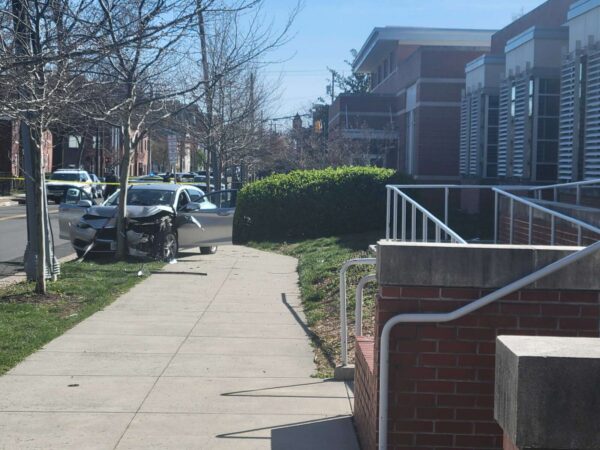
Things are about to slow down in school zones.
The Alexandria School Board on Thursday (October 6) unanimously approved a resolution requesting a reduction from 25 miles per hour to 15 mph in school zones.
“We are really making our students and our community safe,” said Board Member Abdel Elnoubi, who wrote the resolution. “We’re helping save lives here.”
The resolution now goes to City Council for approval.
The following school zones have 25 mph speed limits:
- N. Beauregard Street — Outside the John Adams Elementary School, William Ramsay Elementary School and Ferdinand T. Day Elementary School zones
- Braddock Road from N. Beauregard Street to Quaker Lane — Outside Alexandria City High School’s Minnie Howard Campus school zone
- Seminary Road (Kenmore Avenue to N. Pickett Street) — In the Francis C. Hammond Middle School zone
- King Street — Alexandria City High School’s school zone
City Council will also review a plan to install Alexandria’s first speed cameras in school zones later this month.
The conversation over a speed limit reduction and cameras installation began after a nine-year-old girl was hit by a car and seriously injured just outside Jefferson-Houston Elementary School in March.
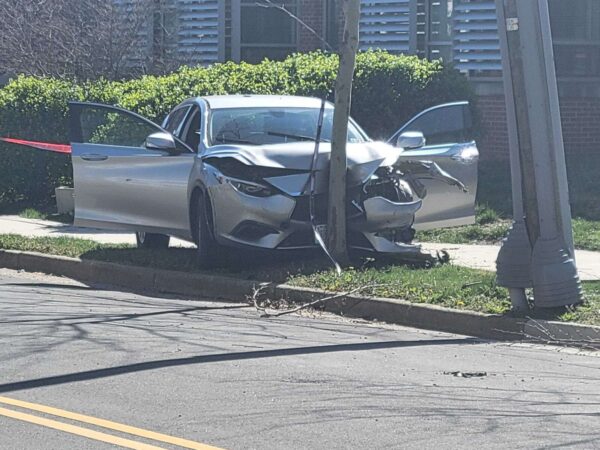
A plan to install Alexandria’s first speed cameras is headed to final review at the City Council later this month.
The ordinance will authorize the installation of five cameras across Alexandria school zones with the goal of reducing speeds in those zones.
The ordinance doesn’t specify where those cameras will be placed but adds “photo speed monitoring devices” into the city code.
The ordinance will allow cameras for use both in school zones and in highway work zones.
The new ordinance comes after Virginia code was amended in 2020 to allow limited use of speed cameras in the aforementioned school zones and highway work zones. The five cameras installed will be the first speed cameras in Alexandria.
A presentation to the City Council presented a few parameters for the program:
- A sworn police officer must confirm the violations
- Signs must clearly be placed alerting drivers in advance of the speed camera enforcement zone
- Fines cannot exceed $100
Staff recommended approval of the new ordinance. The proposal is scheduled for first reading next Tuesday, Oct. 11, and final review on Saturday, Oct. 15
A new study shows that the most dangerous area for pedestrians is Old Town.
The law firm of Shapiro, Washburn & Sharp commissioned the study, which identified 20 areas, and was conducted by California-based 1Point21 Interactive.
The study, which includes an interactive map, tabulated more than 11,000 crashes between 2015 and 2022, with the most in Alexandria’s Old Town Historic District.
There were 68 crashes and 75 injuries, throughout Old Town. In second place is the MCV and Capitol districts of Richmond with 55 crashes and 56 pedestrians injured, followed by Clarendon in Arlington County with 52 crashes and 58 pedestrian injuries.
“In Virginia, pedestrian safety is a growing concern. From 2015 through June 2022, over 11,000 pedestrians were struck in the state of Virginia, leaving over 10,000 injured and 848 dead,” according to the study.
The top 20 most dangerous areas are below.
RANK ZONE NAME LOCATION CRASHES PEDESTRIANS INJURED 1 Alexandria Historic District Alexandria 68 75 2 Capitol – Biotech and MCV Districts Richmond 55 56 3 Clarendon Arlington County 52 58 4 Belvidere St Corridor Richmond 44 43 5 Monroe Ward Richmond 37 39 6 Virginia Commonwealth University Richmond 34 35 7 Ballston Arlington County 32 31 8 North Rosslyn Arlington County 31 32 9 Caroline Street Corridor Fredericksburg 29 33 10 Shockoe Bottom Richmond 26 26 11 Columbia Pike Corridor Arlington County 24 25 12 Pacific Ave Corridor Virginia Beach 20 20 13 Main St Corridor Blacksburg 19 19 14 Shockoe Slip Richmond 18 18 15 Crystal City – Richmond Hwy & 23rd St Arlington County 18 20 16 Wilson Blvd Corridor Arlington County 18 18 17 Court House Arlington County 16 17 18 Ridge St Corridor Charlottesville 15 14 19 Columbia Pike & S Four Mile Run Dr. Arlington County 15 15 20 Downtown Roanoke Roanoke 14 14
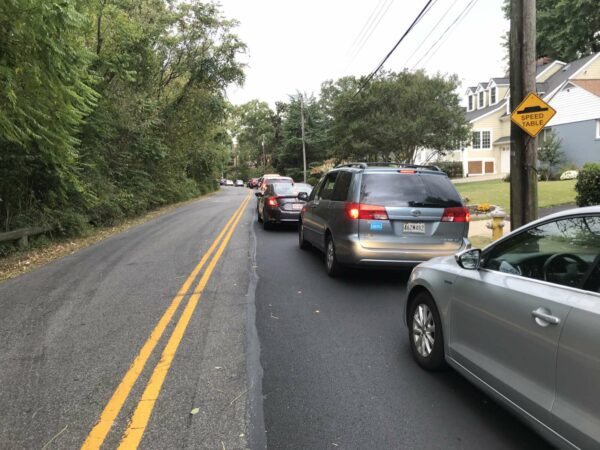
(Updated 8/3) The City of Alexandria is moving forward with the next stage of a pilot program to keep traffic on Duke Street and off residential streets, but Mayor Justin Wilson said in a recent newsletter that this is the start of a broader effort targeting cut-through traffic.
Wilson said the issue of congestion’s impact on the quality of life for Alexandrians came up during an update to the Alexandria Mobility Plan in 2021.
“The data collection that was performed for the Central Alexandria Traffic Study revealed that a relatively small number of residential streets were carrying inordinate amounts of ‘cut-through’ traffic,” Wilson wrote, “mostly using those streets to access the Telegraph interchange with the Beltway.”
The study found that:
- Of the vehicles coming from Seminary Road and Quaker Lane, roughly half use Quaker Lane to access the Telegraph Road ramp and half use local streets, namely Cambridge Road, Yale Drive and West Taylor Run Parkway.
- Of the vehicles coming from Seminary Road, 16% use Jordan Street (5%) or Fort Williams Parkway (11%). Roughly 35% use Quaker Lane and about half use local streets that are east of Quaker Lane.
- Of the vehicles coming from King Street, about 85% use West Taylor Run Parkway with most of the rest using Cambridge Road (13%).
Earlier this year, a pilot program implemented changes to light timing on Duke Street, Quaker Lane, and the connected side streets in an effort to disincentivize using the side streets to get around traffic on the arterial roads.
According to Wilson, the data from that pilot was generally positive:
- Overall volume on the Telegraph Road ramp was down by 14%
- Travel times for all routes were faster than before, but were about 35% faster using Quaker Lane and 20% faster on West Taylor Run
- Cut through traffic on Quaker Lane increased by 23%
- Cut through traffic on West Taylor Run and Cambridge Road decreased by 47% and 73%, respectively.
- Cut through traffic on Yale Drive, with the new “no left turn” restriction in place, decreased by 96%, from 706 vehicles in the peak to 31
- Cut through traffic on Fort Williams Parkway decreased substantially, by 81%, from 171 vehicles to 32
One of the decidedly unscientific ALXnow polls indicated that 49% of respondants wanted the signal changes to be made permanent, while another 33% wanted to see wait to see how phase two would impact traffic.
That second phase of the pilot is in the works, which would bring back the light timing but also limit access from West Taylor Run Parkway to Telegraph Road.
“The plan is to assess the impact, collect data and engage with the community to ensure these changes achieve the results they are designed to create,” Wilson wrote. “Our City staff will be discussing the Phase 2 pilot at a Clover College Park Civic Association meeting on August 10th. This meeting is open to the public.”
The City is going to be hosting their own virtual meeting on this project on August 11.


